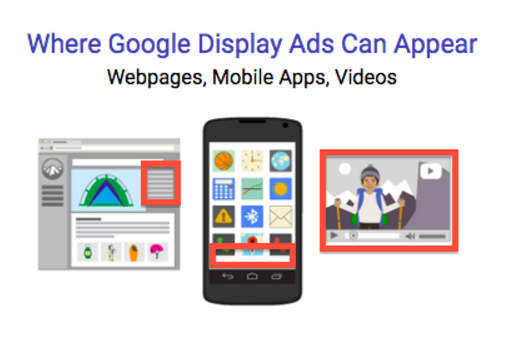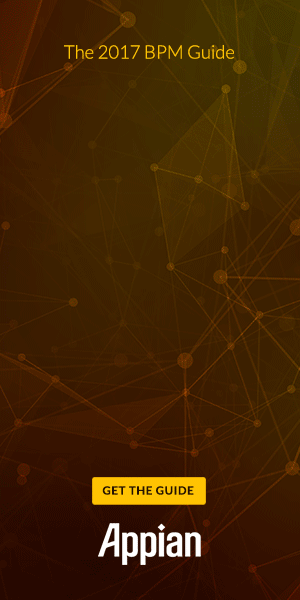
How to Use Content Marketing in Google Display Campaigns

 When you think about a pay-per-click (PPC) campaign, the first thing that comes to mind is probably a Google Search campaign. It’s understandable since, for some reason, PPC has become synonymous with paid search.
When you think about a pay-per-click (PPC) campaign, the first thing that comes to mind is probably a Google Search campaign. It’s understandable since, for some reason, PPC has become synonymous with paid search.
But there is an entirely separate PPC network not every business is using for lead generation and demand generation campaigns: the Google Display Network (GDN).
According to Google, the GDN spans more than 2 million websites and reaches over 90 percent of internet users. Rather than restricting marketers to serving ads only on Google’s search engine results pages (SERPs), Google Display campaigns allow organizations to connect with potential buyers who are reading articles on industry publications, watching YouTube videos, checking their Gmail inbox or using mobile apps.
Google Display campaigns also enable marketers to create colorful ads with images, video or animated content. Finally, and potentially most importantly, Google Display campaigns are perfect for targeting and capturing the attention of buyers who are in earlier stages of the buyer’s journey. Because the audience for a Google Display campaign is passively consuming content about topics relevant to your industry or solution, it’s a perfect opportunity to serve them your own content and start a conversation with your company.
In this article, we’ll discuss the differences between Google Search and Google Display campaigns and the best way to use content marketing on the Google Display Network.
Google Display Campaigns vs. Google Search Campaigns
To better illustrate the difference between Google Display campaigns and Google Search campaigns, here’s an analogy:
KCI Coffee sells organic, fair trade coffee. To increase awareness of its brand and engage with an audience similar to its existing customers, KCI Coffee representatives set up a table at the front of a health food store.
The reps know that while not every one of the store’s customers will be actively looking for coffee, the customer’s decision to shop at a health food store indicates he or she is health-conscious (and potentially socially conscious). Therefore, it’s safe for the reps to assume the customer could be interested in their product.
Conversely, if the representatives took a search campaign-esque approach, they would stand in the middle of the coffee aisle and hold out bags of KCI Coffee’s products toward any customer who browsed the store’s available coffee, indicating they were planning on buying coffee. This strategy would be acceptable because the customer has demonstrated he or she is at least actively considering buying the type of product the rep’s company offers.
Each approach makes sense for the type of audiencewith whom the KCI Coffee’s reps are trying to connect.
An effective strategy for starting a conversation with the customers browsing products other than coffee would be this …
- The reps create an eye-catching display with appealing signage and collateral that helps make them conspicuous (but not obnoxious).
- When a customer walks by, the reps politely invite the customer to come to their table.
- If the customer says, “No thank you,” the reps can leave it at that for the time being.
- If the customer comes over to the table, the reps ask him or her a little bit about themselves. It’s reasonable to assume the customer cares about organic products and wants to maintain a healthy lifestyle (he or she is shopping in a health food store, after all). There’s also a strong possibility he or she is socially and environmentally conscious since the representatives know their existing customers hold these values.
- The reps offer the customer a brochure on how fair trade coffee is related to what matters to them by explaining that the vast majority of producers of fair trade coffee grow their coffee organically, provide acceptable working conditions for their employees and practice ecological responsible farming methods.
- The representatives then take this opportunity to teach the customer more about their brand and discuss the benefits of their product over their competitors’ products.
- After the reps have demonstrated they care about the integrity of their product as well as how it supports a healthy lifestyle, they can offer the customer a sample of their product and then invite them to purchase a bag.
Now think about how successful the representatives would be if the first interaction they had with a customer was yelling, “Hey! Our fair trade coffee is the best! You need to buy it right now!” just as they walked through the door. Answer? Not very. The customer has indicated no greater interest in buying fair trade coffee beyond simply being in a store where it is sold.
So how does this translate to a Google Display campaign? Here’s how:
- The health food store is the websites you (or Google) have decided are the best avenues to reach a similar audience, based on the keywords, interests and topics you’ve decided to target.
- The shoppers (obviously) are your prospective buyers.
- The table is your ads.
- The reps are your landing pages.
- Their questions are the form fields on the landing page.
- The brochure is your gated content.

Google Display Ads in Action: Appian
Earlier this year, Appian, a business process management (BPM) software provider, released The BPM Guide: Accelerating Digital Transformation. The download is an introduction to the basics of BPM, which the company decided to promote via a Google Display campaign.
Appian’s display ad (below) is a great example of the extra features marketers can use in Google Display campaign content—specifically, colors, imagery and animation. The ad is light on copy and features a clear call-to-action (CTA) which stands out from the background of the ad. Plus, while the ad is animated, the animation is not excessive and the CTA is always present.

Proving Your Value
If you mirror the second approach above, it’s akin to only serving Contact Us or Free Trial ads in a Google Display campaign. Again, this audience has expressed no real interest in your type of solution (let alone your company) beyond reading an article on a topic related to your product or service. And if your ad is asking them to speak with you before you’ve even proved your value, it’s highly unlikely they will click on it. Or if they do, they’ll probably bounce immediately—and potentially even be a little annoyed.
But by taking the time to engage with prospects and offer them content related to their needs, you establish your organization as a helpful partner who is cares about what matters to these potential buyers and what they’re trying to accomplish.
Even if the only interaction the buyer has with your company is to download a single piece of content and call it a day, you still have their information and can retarget them with other high-value content. In the coffee analogy, it’s like asking the shopper to provide his or her email address and then sending a newsletter with interesting articles about organic farming or tips for healthy lifestyles. You get to continue the conversation.
Creating Your Google Display Campaign Content Strategy
When determining how best to use content marketing in your Google Display campaigns, you need to consider some important facts about the GDN.
In a Google Search campaign, your ads can only be shown in one place: on the search engine results page (SERP). Therefore, while there are many secondary targeting options you can set in a search campaign—for example, location, ad schedule and devices—there is only one primary targeting method: keywords.
Because of this, it’s easier to determine in which stage of the buyer’s journey a prospect is, based on their search query. For example …
- “how do I convert more leads to sales” = Awareness
- “best marketing automation software” = Consideration
- “HubSpot demo” = Decision
And since you have a better idea of where they are in the process and there’s only one place where you can display your ads, determining which content to serve is a more straightforward process.
But with a Google Display campaign, there are four different primary targeting methods, in addition to the secondary ones listed above:
- Display Keywords
- Interests
- Topics
- Website Placements
And most of the individual keywords, interests, topics and placements within each of these categories have exponentially larger audiences than the average search keyword. Plus, in a Google Display campaign, your ads can be shown on innumerable different websites and apps. Everything is broader—specifically, the size and scope of your audience and available ad locations. Because of this, your content must be broader and be designed to reach a less well-defined audience.
Businesses that limit their PPC efforts to Google Search campaigns are substantially limiting their potential reach. If a company wants to effectively use content marketing to target buyers in all three stages of the buyer’s journey, it should consider Google Display campaigns. As long as the content strategy is adjusted for each network, businesses can expect a greater volume of leads ready to be nurtured into customers.



